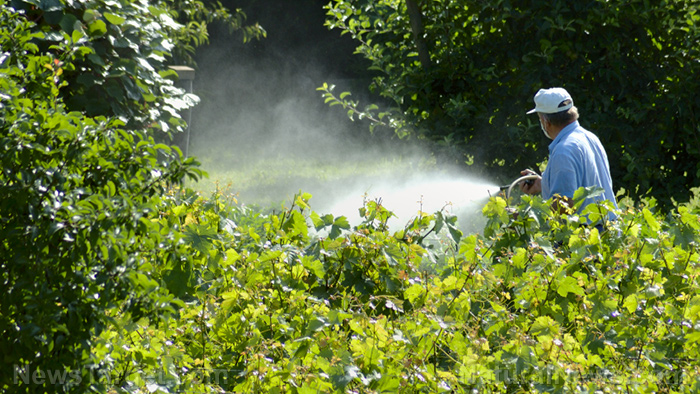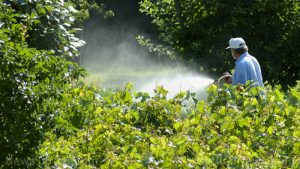
Bentazone – toxicity, side effects, diseases and environmental impacts
Saturday, December 02, 2017 by Janine Acero
http://www.naturalpedia.com/bentazone-toxicity-side-effects-diseases-and-environmental-impacts.html

Bentazone is a selective herbicide categorized under the thiadiazine group of chemicals. It appears as a colorless to white crystalline, odorless powder. Bentazone formulations are used as post-emergence herbicides for the control of broad-leaved weeds and sedges, as well as food and feed crops including alfalfa, beans, corn, peanuts, peas, peppers, peppermint, rice, sorghum, soybeans and spearmint.
Some of the other names and identifiers for bentazone include:
- Bentazon
- Basagram
- Basagran
- Bendioxide
- Bentazon (ANSI)
- Herbatox
- Leader
- Laddock

List of known side effects
Bentazone is a toxic chemical that may cause adverse symptoms like dermal allergic reactions and serious eye irritation. Accidental ingestion of bentazone has caused vomiting, diarrhea, trembling, weakness, and irregular or labored breathing. Side effects that have occurred in test animals include apathy, incoordination, prostration, tremors, and anorexia.
The U.S. Environmental Protection Agency (EPA) classified bentazone as Group E “Evidence of Non-carcinogenicity for Humans”.
Body systems affected by bentazone
Animal studies showed that concentrations of bentazone affect fertility and the embryo or fetus. In addition, it affects the musculoskeletal system and the urogenital system (reproductive and urinary systems).
Items that may contain bentazone
Bentazone is a pre-emergence herbicide that controls plant pests, including black bindweed (Fallopia convolvulus), nightshade (Solanaceae), fat hen weed (Chenopodium album), hedge mustard (Sisymbrium officinale), Shepherd’s Purse (Capsella bursa pastoris), wild radish, wild turnip, bellvine, star burr (Acanthospermum hispidum) and anoda weed (Anoda cristata).
The Pesticide Properties DataBase gives the following examples of bentazone applications: corn, rice, alfalfa, sorghum, linseed, peanuts, beans, peas, clover, chives, garlic, ornamentals (e.g. begonia), soybeans and turf.
The following products contain bentazone as an active ingredient:
- Basagran
- Zone 48
- Troy 480
- Herbatox
- Leader
- Laddox
These are some of the manufacturers and suppliers of products that use (or had used) bentazone actively:
- AgriGuard
- BASF
- Goldengrass
How to avoid bentazone
Bentazone is a toxic substance applied to a number of crops. It is advisable to consume homegrown fruits and vegetables or those that are grown in your local farm to make sure no harmful toxins have been applied to them.
In case of accidental exposure to bentazone, particularly with handlers, mixers and applicators of this substance, here are some safety measures:
- Inhalation – Leave the area of contamination and go to an open area with fresh air or proper ventilation. Seek medical attention immediately.
- Skin contact – Remove any contaminated clothing item and rinse the contaminated part of the skin with soap and water.
- Eyes – Remove contact lenses if applicable. Rinse with running water for several minutes. Seek medical help at once.
- Ingestion – Give plenty of water to drink. Refer for medical attention immediately.
Where to learn more
- Hawaii’s Department of Agriculture sued for dumping hazardous pesticides into waterways
- Poison.news
- Chemicals.news
- Pesticides.news
- Toxins.news
Summary
Bentazone is a colorless to white crystalline, odorless powder that belongs in the thiadiazine group of chemicals.
Bentazone is used as a post-emergence selective herbicide for the control of broad-leaved weeds and sedges. It is applied to a range of plants and crops, including beans, corn, peppers, rice and soybeans, to name a few.
Bentazone is toxic; direct contact or exposure may cause negative side effects like dermal allergic reactions and serious eye irritation. In severe cases, people may experience prostration, tremors and anorexia.
The EPA categorized bentazone as Group E “Evidence of Non-carcinogenicity for Humans”.
Sources include:
Tagged Under: Tags: Bentazone





